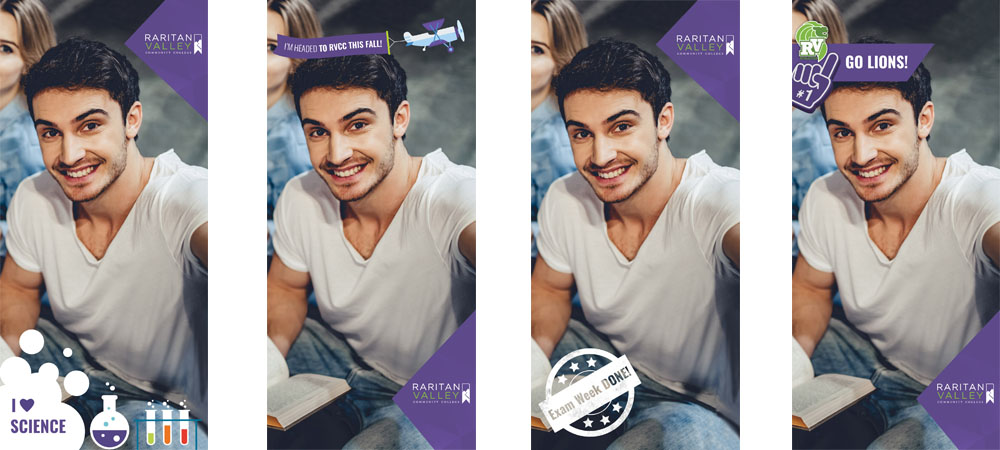Digital marketing offers great opportunities for the higher education sector. With mobile advertising becoming a must and the ever-evolving channels of communication, schools need to understand and integrate the latest technologies.
For many establishments, digital advertising is a budgeting conundrum. However, investing in the right type of online campaign is absolutely necessary to increase enrollment numbers. It’s also important to build the most desirable image for your school and reinforce your visibility, engagement, and credibility.
Your institution can grow its marketing impact by using a multi-platform approach. What does this mean?
Optimize for Search
The primary way potential students look for information is digitally. Paid search advertising can bring incredible numbers in relation to other ad channels.
If managed right, Google Adwords is a fantastic channel. For example, generic searches like “Best marketing programs” or “marketing schools” can cost over $60 per click. You don’t want that.
Setting up a paid campaign for your school’s specific advantages (“flexible BA in economics”, “affordable nurse diploma”) can increase your targeted student traffic at far better ROI.
Being #1 in search results isn’t necessarily going to get you more applicants. What your school needs is the right keywords, based on solid analytics. Data could reveal that, in your case, targeting high school students isn’t the only strategy and maybe your focus should be on continuing education?
Understanding your potential applicants also means adapting your copywriting for each segment of students. For example, high school applicants might be more excited to hear about campus’ social life (“active social scene”, “small class size”) while career training students would look for the flexibility of classes and convenience of learning (“affordable education”, “quality education”).
Setting up the most impactful SEO campaign is based on a school’s specific offering, geographical location, and diploma benefits. It should also be coupled with influencer marketing campaigns (friends, peers, guidance counselors). As it happens, most potential students searching for information online are only investigating the advice they have received from their circle of acquaintances.
Social Platforms
Most college students’ are easily influenced by their peers. Therefore, a school will be more successful at increasing enrollments by sharing exciting college life news and peer-to-peer feedback. The goal here is to create assets and content that will attract people organically. By developing a fantastic community around the campus, you are boosting your enrollments through word of mouth.
According to research, 70% of people trust online peer reviews and recommendations more than professional content and copy. Tap into the power of user-generated content by bringing former students to share their experience and talk about their post-college work opportunities. Or recruit student influencers to help promote your programs.
A content approach will help warm students and inform them, rather than directing traffic to your “apply now” page.
Smart Non-Advertising
Let’s look at a recent campaign created for RVCC. Here, we evaluated Snapchat to be their students’ preferred channel for sharing. We brainstormed creative ways to promote the school using Snapchat. We geo-fenced the campus and outlined different target areas (the stadium, the library, visitor meeting and gathering places, bus stops, parking pick-up, drop-off locations, and other meeting places). We then created fun Snapchat filters to celebrate events, student achievements, and fun happenings at each of the geo-fenced spots. The more students use RVCC’ branded Snapchat filters, the more endorsement and influencer marketing the school builds organically.

Short Video Stories
Short video storytelling is a great way to advertise higher education. How short? We’re talking about 6-second bumper ads and instream ads. While 6-second ads are short on time, they're long on impact. Google tested over 300 bumper campaigns and found that 9 out of 10 drove a significant lift in ad recall. The same video stories can be posted across the top channels used by high school students: YouTube, Facebook, and Instagram.
You can also use YouTube and Facebook for live streaming of a campus event. Or even better, let school influencers stream the event to their own followers.
The main goal is to reach online users with a memorable/touching message. Most probably your target audience on YouTube includes: high school students (age 16-19), the secondary target are adult learners (Age 20-34); parents of students, guidance counselors.
Banners Ads
Banner ads should be organized around a school’s core message. School banners need to be catchy, short, and well-thought-out. Once a prospective student clicks your banner and lands on your site, you have a real opportunity to leave an impression.
Mobile First
Schools report that, as high as 80% of their traffic, is coming from mobile. Since students are glued to their phones, if you want to reach new prospects, you need to be implementing your marketing strategies on mobile before desktop. We have seen marketing campaigns improve by more than 30% in lead conversion when a comprehensive mobile approach has been implemented.
According to the National Center for Education, the total projected undergraduate enrollment is projected to increase to 19.8 million students by 2025.
We would love to help you tap into the flow of student enrollments. For advice, just say hello@edesigninteractive.com
